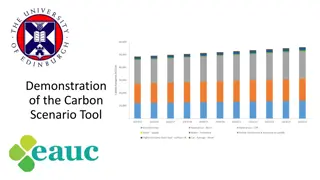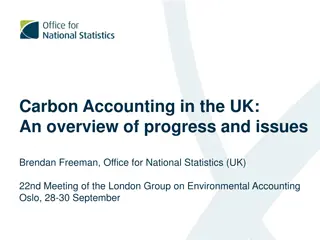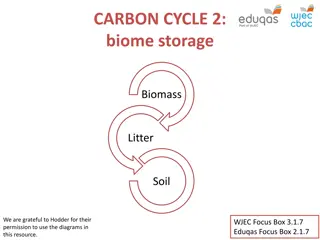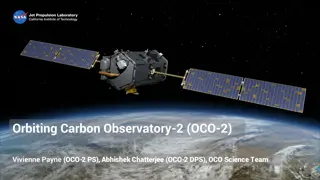Enhancing Low Carbon Infrastructure through Joint Project Initiative
A collaboration between the Chartered Institute of Building Services Engineers (CIBE) and the Association for Decentralised Energy (ADE) culminated in a key project finalized in June 2015, focusing on establishing standards for effective heat networks. The initiative aims to ensure that heat networks operate efficiently, meet customer expectations, and provide a low carbon infrastructure. By emphasizing feasibility studies, design quality, energy efficiency, and customer service, the project seeks to boost confidence in heat networks and attract investors. Detailed aspects such as HNP integration, feasibility development, and financial viability play integral roles in achieving these objectives.
Download Presentation

Please find below an Image/Link to download the presentation.
The content on the website is provided AS IS for your information and personal use only. It may not be sold, licensed, or shared on other websites without obtaining consent from the author.If you encounter any issues during the download, it is possible that the publisher has removed the file from their server.
You are allowed to download the files provided on this website for personal or commercial use, subject to the condition that they are used lawfully. All files are the property of their respective owners.
The content on the website is provided AS IS for your information and personal use only. It may not be sold, licensed, or shared on other websites without obtaining consent from the author.
E N D
Presentation Transcript
A joint project between the Chartered Institute of Building Services Engineers (CIBE) and the Association for Decentralised Energy (ADE) finalised June 2015
Key to a low carbon infrastructure The Code seeks to provide clear and measurable outputs which will ensure that a heat network operates effectively and meets client and customer expectations. Setting minimum standards is a key step to provide greater confidence for specifiers and clients and these can also be included in the tendering/contracting process.
Scope of the code Preparation and briefing Feasibility Design Construction and installation Commissioning Operation and maintenance Select dummy image and right click> change image> and then select the high res image you wish to use. Hold down shift whilst using the mouse to scale the image up or down, to avoid it from stretching. Please delete this instruction after doing so. Ensuring Customer expectations are met
Focus on feasibility studies Improve the quality of feasibility studies, design, construction, commissioning and operation by setting minimum requirements and identifying best practice Increase energy efficiency Ensure high quality customer service Increase confidence in heat networks for customers and investors
HNP and the Code To achieve sufficient accuracy of peak heat demands and annual heat consumptions CIBSE TM22 applied to annual loads To identify the most suitable low carbon heat sources and location of an energy centre To determine the location of top-up and standby boilers and use of existing boilers To select suitable operating temperatures Consider renewables, heat loss and heat storage requirements. To define heat network distribution routes, pipe sizes and costs HNP standard schedule of rates for pipework and heat loss To determine building connection costs including heat metering To minimise the negative impacts of phasing the development
Detailed Feasibility Development of scope and preparation of specification. Framework of credible study providers Evaluation of responses Preparation of financial viability HNP added value Brief, Procurement, quality control and reduced cost Output to feed into LCITP funding
Framework contract for DH feasibility 8 Delivery contractors Arup Burro Happold Craighall Energy GEP Environmental Parsons Brinckerhoff Ramboll Ricardo-AEA Jacobs
Investment grade proposal Business case and proposition to prospective investors Contents: Information memorandum Project description Investment Proposition Delivery Strategy Potential investor exit points Timeline Information is available to potential investors Collaborative Partners and Advisers Market demand analysis List of project backers Valuations























